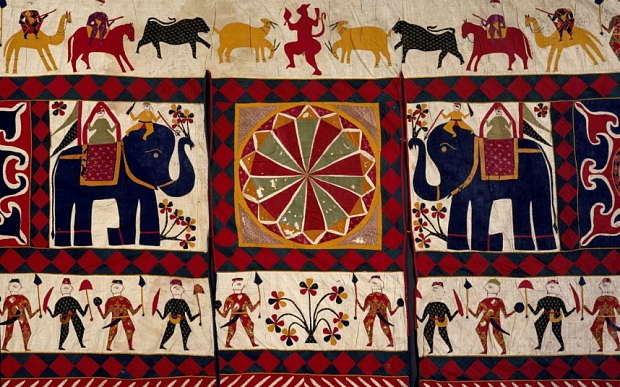UNITED KINGDOM, February 6, 2015 (Telegraph): The treasures in the V&A’s Indian collection boast an illustrious past, passing through the hands of sultans and maharajas. Yet one prized item, a wall hanging which will take centre stage at the museum’s forthcoming India Festival, has a more lowly history. It was destined for the rubbish bin and only saved by a member of the public who spotted it heaped on a pavement.
The vast work, measuring 56 feet in length, was spotted on the street outside a warehouse in Brooklyn, New York, more than 20 years ago by an art appraiser named Jerome Burns who was struck by its beauty. The work was far too large for Mr. Burns to display at home, and in 1994 he contacted the V&A while on holiday in the UK and offered it as a gift.
Textile experts at the London museum identified it as a superior example of Indian folk art. Handmade with fabric designs of elephants, people and Hindu gods appliqued to cotton backing, it was most likely created in 1920s in rural Gujarat. After conservation work, it is to go on display for the first time in The Fabric of India exhibition, which opens on October 3 as part of this autumn’s India Festival.






